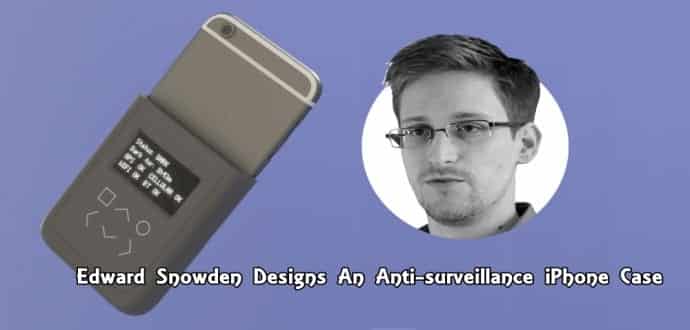iPhone Cover: Edward Snowden’s New Research Aims To Tell You If The NSA Is Listening
National Security Agency (NSA) whistleblower Edward Snowden has been working with prominent hardware hacker Andrew “Bunnie” Huang to develop a way for potentially endangered smartphone users to monitor whether their devices are making any potentially compromising radio transmissions. In other words, it aims to give users the ability to see whether their smartphone is sending out secret signals to an intelligence agency.
Snowden along with his co-author and fellow hacker Huang presented their findings on smartphone “hardware introspection” in a talk at MIT Media Lab’s Forbidden Research yesterday.
“This work aims to give journalists the tools to know when their smart phones are tracking or disclosing their location when the devices are supposed to be in airplane mode,” the pair wrote in their technical paper.
They contend that you cannot depend on a smartphone’s user interface to tell you the truth about that state of its radios. Their first prototyping work uses an iPhone 6.
“We have to ensure that journalists can investigate and find the truth, even in areas where governments prefer they don’t,” Snowden told Intercept in a video interview. “It’s basically to make the phone work for you, how you want it, when you want it, but only when.”
Snowden, an ex-NSA contractor currently living in exile in Moscow, and Huang, a prominent hacker who used reverse engineering to hack into Microsoft’s Xbox and other hardware devices, believe that their solution can protect journalists and activists from being deceived by their smartphones.
In their paper, they mention Marie Colvin, an acclaimed international journalist from New York, who had entered the besieged city of Homs, Syria, while reporting for London’s Sunday Times. However, she was killed by the Syrian forces in 2012.
According to a lawsuit filed by Colvin’s family this month, they suspect that the Syrian forces may have traced Colvin through her cell phone signals, which might have been intercepted. Syrian military intelligence used “signal interception devices to monitor satellite dish and cellphone communications and trace journalists’ locations,” the suit says.
Your phone is lying to you
Snowden and Huang make it clear in their paper that what you see on your smartphone’s screen is not always true.
Smartphones come in a range of different types of radio transmitters and receivers: cellular modems (for phone calls, SMS messages, and mobile data), Wi-Fi, Bluetooth, and others. However, using any of these radios could leak your physical location to a rival, especially if they are compromised by a sophisticated intelligence agency or hackers who are watching the airwaves. Even turning on airplane mode can’t be relied on to crush your smartphone’s radio traffic, since the current version of Apple’s iOS still keeps the GPS active while in that state.
“Trusting a phone that has been hacked to go into airplane mode is like trusting a drunk person to judge if they are sober enough to drive,” Snowden and Huang explain in their blog post.
Since a smartphone can basically be made to lie about that state of its radios, the goal of Snowden and Huang’s research, according to their post, is to “provide field-ready tools that enable a reporter to observe and investigate the status of the phone’s radios directly and independently of the phone’s native hardware.”
Therefore, the duo proposes something else: A device that plugs into the hardware and continuously scans to see whether it is communicating.
While they think that their research can be applied to just about any smartphone, currently they are developing a device for the 4.7″ Apple iPhone 6.
The case for answering digital surveillance
The pair proposes the creation of what looks like a battery case after doing a lengthy technical analysis of exactly what your iPhone is transmitting and when.
Besides providing the iPhone some added juice, the add-on hardware will also give a digital readout of whether the user’s device is “dark” – not sending out when it’s not supposed to – or whether a cellular, Bluetooth, Wi-Fi signal, or GPS has betrayed them.
Though it’s not actually developed yet, both Snowden and Huang plan to create a prototype of the device this year. Currently, they are just researching and carrying out a technical analysis of their findings.
“As the project is run largely through volunteer efforts on a shoestring budget, it will proceed at a pace reflecting the practical limitations of donated time,” they wrote. “If the prototype proves successful, [The Freedom of the Press Foundation] may move to seek the necessary funding to develop and maintain a supply chain. This would enable the FPF to deploy modified iPhone 6 devices for field service among journalists in high-risk situations.”
Source: The Intercept
